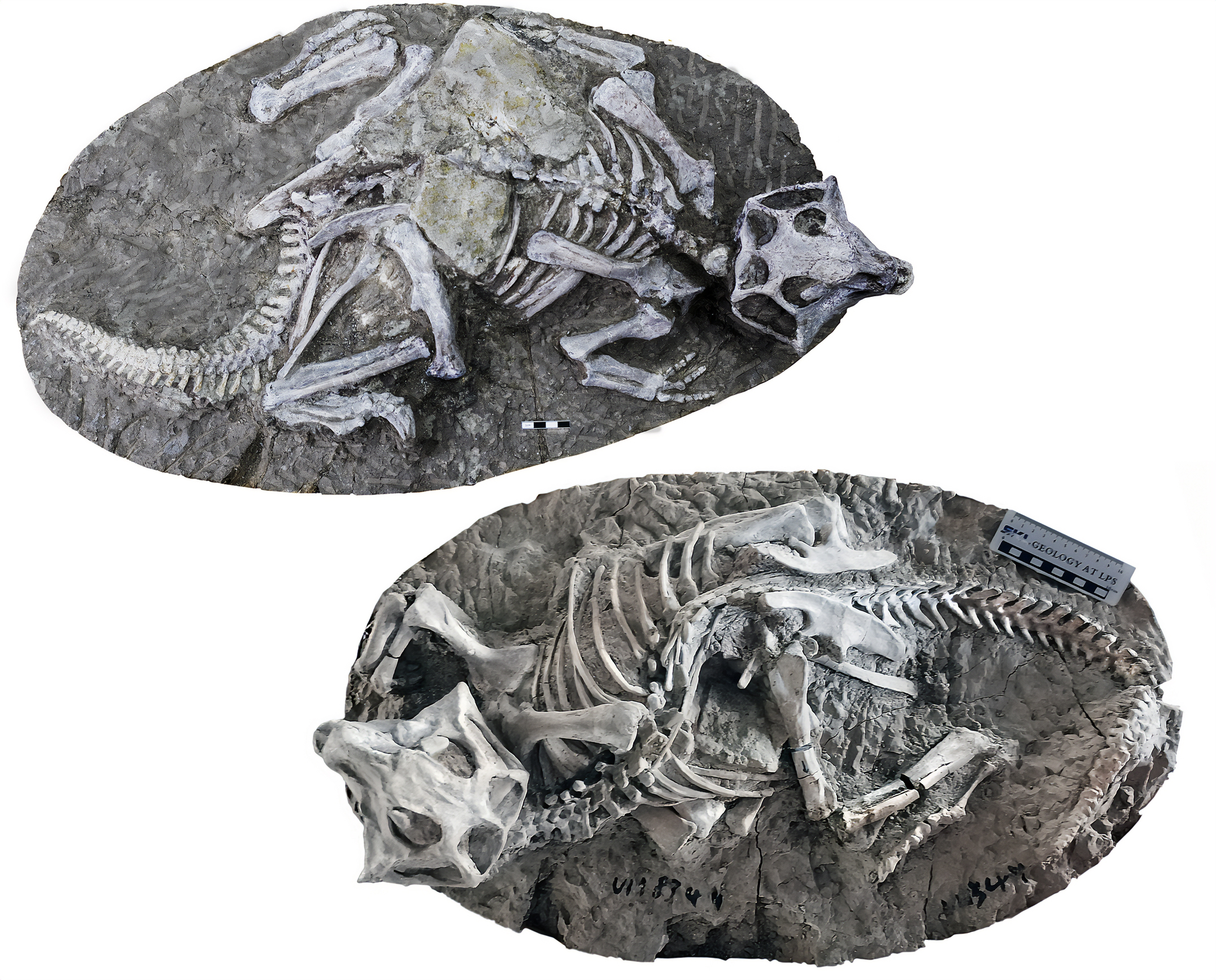The fossils of the Yixian Formation in northeast China represent the greatest collection of superbly preserved dinosaurs in the world. Their remarkable state has usually been attributed to being buried in volcanic ash, preventing disruption by scavengers or even microbial decay. However, a new study disputes this, attributing their deaths to much less spectacular processes. Arguably, this is a new round in a debate that has been going on since the birth of geology, between those who attribute phenomena to swift catastrophes, and those who think slow versions of well-known events were responsible.
The Yixian fossils, dating from 120-130 million years ago, represent a global treasure, teaching us things about Cretaceous dinosaurs and the animals they lived with we might not have learned any other way. This includes evidence that one dinosaur species had adolescent babysitters mind their young, beetles of the time cared for their offspring, as well as the last meal eaten by dinosaurs and other animals alike. All this is accompanied by the oldest evidence for the ancestors of modern birds, feathers so well preserved we can identify their colors, and the oldest two-headed animal ever found.
Excited as paleontologists are by finding these scientific riches, they’re divided by the question of why the preservation is so exceptional. The dominant explanation has been that a volcanic eruption dumped layers of ash that buried the dinosaurs and other co-existing animals, just as thousands of Romans were buried by ash at Pompeii. As with the Vesuvius eruption, the process was so quick, the argument goes, that it preserved a record of life at the time, and the volcanic material left little opportunity for decay.
However, Dr Paul Olsen of Columbia Climate School is part of a team that has concluded the evidence is otherwise. Instead, Olsen and co-authors argue, the preservation was achieved through more boring means, such as burrows collapsing so thoroughly that lack of oxygen cut decay short. Sediments washed down in rainy periods then completed the process of sealing in the specimens.
“What was said about their method of preservation highlights an important human bias,” Olsen said in a statement. “That is, to ascribe extraordinary causes, i.e. miracles, to ordinary events when we don’t understand their origins. These [fossils] are just a snapshot of everyday deaths in normal conditions over a relatively brief time.”
To assess the likelihood of volcanic activity, Olsen and colleagues used uranium-lead isotopes to date the Yixian fossils and surrounding material more precisely than had previously been possible. They concluded all the specimens were laid down in three bursts in the space of less than 100,000 years approximately 125.8 million years ago.
This rules out the theory there had been several eruptions millions of years apart. The timing also matches an era when orbital cycles caused three particularly wet periods in the region. Those heavy rains caused rapid sediment build-up, which would have buried animals quickly with less time to rot.
On the other hand, the Yixian fossils do not show the twisted positions seen in human remains from Pompeii, a product of gruesome deaths from heat so intense the victims’ blood boiled. The exceptional preservation of feathers – one of Yixian’s most noted features – is also inconsistent with extreme heat.

Examples of stunningly preserved Psittacosaurus lujiatunensis dinosaurs for Yixian. The natural positions in which they are preserved suggest they died by suffocation, not heat-blasted.
Image credit: Jun Liu, Institute of Paleontology and Paleoanthropology, Chinese Academy of Sciences
On the other hand, the fossils’ skeletons are mostly surrounded by fine rock grains, with courser grains further out. Olsen and co-authors interpret this as a sign bacteria had enough time to degrade the flesh, but the oxygen supply was cut off by finer sediments before they could do the same to the bones. Similar things are seen in modern burrow collapses affecting birds that nest underground.
Perhaps the most famous Yixian fossil, of a small mammal and dinosaur locked in battle, may represent one invading the other’s burrow to feed, only for both to be killed in an unfortunately timed collapse.
Rainy weather may have contributed to instability, but in an era when the largest beasts to ever walk the Earth were stomping around, it’s not hard to think of a reason burrows might have caved in.
The obvious rebuttal to these conclusions is that if it didn’t take a volcanic eruption to bury dinosaurs this way, why do we seldom see such preservation elsewhere? Olsen thinks it’s there to be found. “It’s just that there is no place else where such intense collecting has been done in this kind of environment.” Yixian may be the world’s largest paleontological excavation site in the world, with the digging visible from space. “You have to dig out, say, 100,000 fish to find one feathered dinosaur, and no one is digging on the Yixian scale,” Olsen said.
The study is published in the Proceedings of the National Academy of Sciences.
Source Link: We Might Have Been Getting The World’s Best Preserved Dinosaurs’ Deaths Wrong